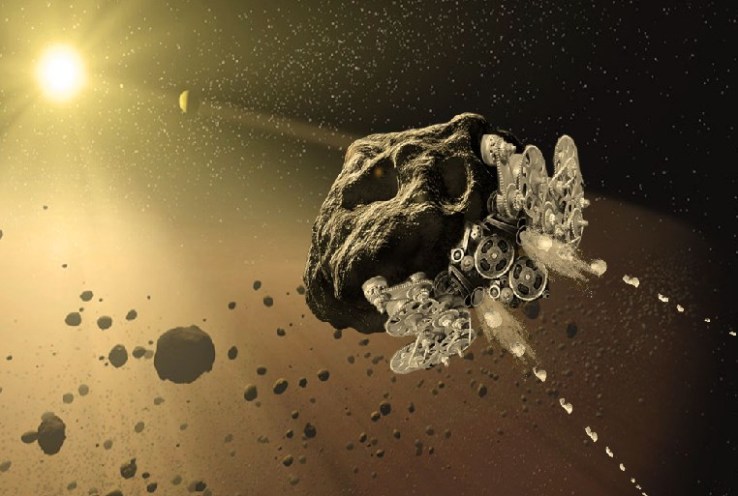Ah, spring — when a young engineer’s fancy lightly turns to harvesting icy moons for rover fuel. NASA has announced the recipients of its yearly National Innovative Advanced Concepts awards, and they’re just as out there as the planets and other stellar objects they propose to mine, analyze and explore.
There are 13 projects that have been given Phase I consideration: about $100,000, with which the team can investigate their concept’s feasibility. These are all idea- or concept-level projects, of course, if you couldn’t tell from the image above, which looks like a sci-fi paperback. It’s rather difficult to practice “reconstituting asteroids into mechanical automata” in your garage.
Phase II selections, which you can generally assume will be fewer in number, will receive $500,000 to continue development. Here are a few of the ideas NASA will be feeding money.
- NIMPH, the Nano Icy Moons Propellant Harvester: a CubeSat-scale lander of which several can be deployed during an investigation of, say, Europa. Instead of packing their own water (to be repurposed as fuel hydrocarbons) they would pick it up on site.
- Brane Craft, a membrane-like spacecraft that could be guided toward space trash in order to envelop it and force it into re-entry. Ultra-light and nearly two-dimensional, these flying branes could be packed by the hundreds into the space taken up by one satellite.
- Reconstituting Asteroids into Mechanical Automata, mentioned above, whereby a team of robots would convert asteroid mass into basic propulsive systems, bringing the objects nearer (the better to harvest). Slower but probably cheaper than bringing your own giant engine.
- Stellar Echo Imaging of Exoplanets would measure the natural fluctuations in radiation from stars as it bounces off exoplanets, potentially providing “continent-level imaging.” This would be useful where gravitational lensing isn’t convenient, though it would require a network of stellar echo detectors, which haven’t been invented yet.
- Urban biomining meets printable electronics — yes, it sounds like a randomly generated startup pitch, but this team has an interesting proposition: Engineer microbes to process spent electronic components, extract the useful elements and then themselves serve as raw material for building more. Nice work if you can get it.
Plenty more interesting programs to check out at NASA’s NIAC selections page. Start a pool with your friends over which will graduate to the next phase.
